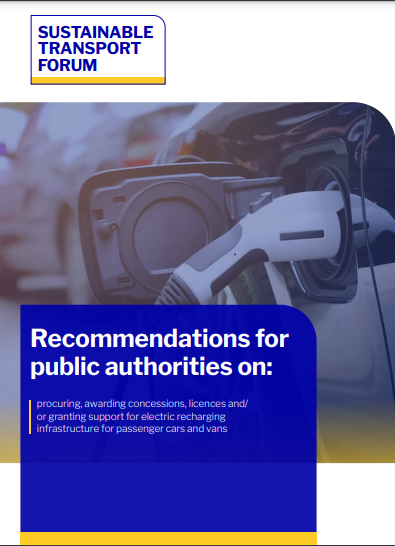The electrification of transport is well underway, with record numbers of electric vehicles (EVs) being sold in Europe in 2020. We need widespread charging infrastructure, however, if we are to ensure the trend continues. Julia Hildermeier, electro-mobility and transport expert at the Regulatory Assistance Project, has advice for cities on how to install private and public charging infrastructure as quickly and cheaply as possible.
Smart charging

“The first step is to deploy only charging points that are able to monitor, measure and communicate when electricity is cheapest and ‘greenest.’ To save costs, a private customer – or a commercial customer, such as a supermarket or logistics fleet operator – will want to know when prices are lowest. This allows them to optimise their charging.”
The crucial element here is that the cheapest electricity is often the greenest. When solar or wind production peaks, wholesale prices on the electricity market go down, especially if the peak coincides with a period of lower demand. Although electricity providers might not currently offer electricity tariffs flexible enough to go up and down with wholesale prices, variable pricing is being implemented as part of the Clean Energy for All package and they should become more readily available. Learn more on variable or ‘smart’ pricing here.

The same principle applies for signalling when electricity grid use is cheapest and best for the system: Time-varying prices are needed to encourage customers to charge, for example, a car or a bus fleet overnight, when generally more capacity is available. Working together with the national regulator and local grid operator to deliver pricing transparency is crucial to keeping charging costs as low as possible. Having time-varying network fees is also a powerful instrument to reduce stress on the electricity network.
Smart planning
“To keep costs under control, it is crucial to locate charging hubs where spare capacity is available on the grid. Infrastructure needs to be placed where people will want to charge, of course, but it’s important for planners to also take into account what the grid can already offer. This process will save considerable costs and time for developers, consumers and authorities. Developers – or a city, if the charging hubs are co-funded – can avoid the cost of building new grid connections or laying physical cables in the ground, if they can tap into existing grid infrastructure a couple hundred meters down the road. Having insight into what capacity is available where, helps developers and authorities plan smarter. Collaborating with the local grid operator is one of the most important steps in building cost‑optimal infrastructure. That’s where we need more transparency and cooperation on a local level.”
Most distribution system operators (DSOs) will plan infrastructure upgrades and investments 10 or 20 years in advance based on their experience. At the same time, a city’s mobility department is planning traffic flows for the next ten years, while charging station operators or property developers look at much shorter terms for developing charging infrastructure. For these plans to work together, it is vital that stakeholders develop these plans together in full transparency. Some promising projects exist:
“UK Power Networks, for example, has developed an open data map that displays the grid’s hosting capacity. In other words, it shows what kind of charging capacity you could install at which local transformer. So, the map will tell you that 50 kW can be accommodated here, or you can offer 100 kW here, but not 150 kW. Matching available capacity with maps of demand for (parking and) charging is valuable for every city, by helping create an optimal charging structure that pairs mobility needs with charging needs and quickly determines the cost-optimal locations.”
Solutions for high mileage vehicles (larger batteries)
“The third ingredient to accelerate e-mobility infrastructure at least cost is to focus on charging solutions for high mileage electric vehicles such as those used for taxis, private hire, logistics and public transport, because they are a major source of pollution and traffic.
And that’s where cities can help establish an “essential charging network,” from which a commercial market can develop, so cities can phase out subsidies mid-term. For cities, this also includes electrifying fleets and public transport, such as bus lines and city logistics. Everyone wins if you match the bus schedule or logistics operations with an overnight charging scheme, when electricity tends to be cheapest, at a location that can minimise the need to build additional capacity. Fleet operators can optimise costs by studying charging options, reducing costly peaks from simultaneous charging and developing load management solutions.”
Example from Hamburg
Hamburg aims to electrify its entire bus fleet, which could have required retrofitting 10 depots with 150 kW chargers and connecting to the grid by 2025. Planners initially assumed that depots had to be connected to the high-voltage grid. By studying smart charging options though (sometimes referred to as load management), they found that the peak load for each depot could be cut in half. As a consequence, planners now assume that almost all depots can be connected at the mid-voltage level (watch this video from 2:19 to learn more). This results in a savings of several million euros for connection costs and, eventually, avoided costs for all of the local grid users who avoid paying for unnecessary grid.
